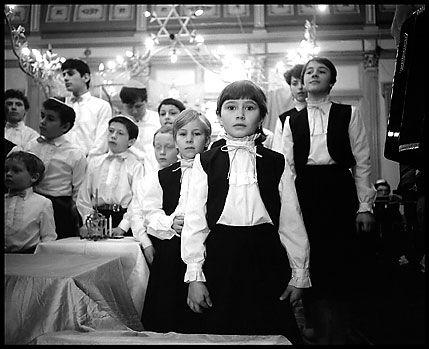
Edward Serotta is a photographer, journalist and author who specializes in documenting Jewish life in Central and Eastern Europe. Serotta was born in Savannah, Georgia, and has been working in Central Europe since 1985. In 2000 he founded Centropa, a nonprofit, Jewish historical institute dedicated to preserving 20th century Jewish family stories and photos from Central and Eastern Europe and the Balkans, and disseminating these stories and photos through films, books and exhibitions. Serotta has published three books on this subject, including "Out of the Shadows: Photographic Portrait of Jewish Life in Central Europe since the Holocaust", published in New York in 1991. As part of the book's documentation, in the chapter dealing with the Jews of Romania from which pictures in the exhibition are presented, Serrota writes that:
"By the time I arrived in Bucharest in 1985, Romania had been suffering through four decades of Communist rule, half of it under the megalomaniacal Nicolae Ceausescu and his wife Elena.
Determined to pay back all western debt, everything that could be exported - wheat, oil, natural gas - was. Whatever could be imported - oranges, bananas, critically important medicines - wasn't. In the winter of 1984, the regime had the heat cut down to a minimum and an untold number of people froze to death in their flats. Ceausescu was in the midst of a building campaign - the systematization - of cities and towns, in which old town squares were leveled and high rise blocs put up in their place. A fifth of Bucharest had been leveled for the 'Avenue of the Victory of Socialism' "
Serotta visited Romania six times between December 1985 and August 1990 as part of his research for his book, "Out of the shadows". He photographed young and old people, men and women in their homes,and during various activities in community institutions: schools, synagogues, and old age homes. Serrota photographed the Jewish communities in Bucharest, Iasi, Botoshani, Dorohoi, Piatra Neamt, Bacau, Ploiesti, Cluj-Napoca, Arad, and Botiza.
Serotta writes that he arrived in Bucharest on Christmas Eve, 1985, and the next morning he visited the Choral Temple and the nearby Jewish community offices where he met the then-chairman of the community, Theodor Blumenfeld, who gave him advice on how to move around in Bucharest, where to change money and where to eat in Kosher restaurants. Blumenfeld also warned him against carrying on conversations with strangers criticizing the government. "That is a trap that the authorities always use."
At a Kosher restaurant on Strada Popa Soare Serotta met a group of pensioners who started talking to him and telling him jokes. "Say, you know why we keep our windows closed in the winter? So people on the street won't catch cold!". Or, "I bet you don't know what we used to use in Romania before candles?" I don’t, "Electricity".
Indeed, Rabbi David Moses Rosen did a good job in organizing the community at the time. In a country where almost nothing worked, community workers distributed 1,600 portions of hot food to seven cities in Romania. During his visit in 1987, Serrota visited several villages, and in Botiza met Rohrmil Drimer, the only Jew who lived in the village. He was employed as a Kosher butcher and traveled four days a week to northwestern Romania in order to supply them with Kosher meat. All over Romania at that time, it was possible to meet young men and women studying for their Bar/Bat Mitzvah. A common sight for most, but one of the most unique in Eastern Europe of those days, which could not be seen at all in Yugoslavia, Bulgaria, or Czechoslovakia.